How long should a migraine last. The Migraine Puzzle: Unraveling the Mysteries of Duration, Symptoms, and Treatment
What is the typical duration of a migraine episode? How do the various stages of a migraine unfold? What can be done to find relief and prevent future attacks? Get the answers to these questions and more in this comprehensive guide on migraines.
Navigating the Migraine Timeline: From Premonition to Recovery
Migraine episodes can be a complex and unpredictable experience, with a range of symptoms that can last anywhere from a few hours to several days. Understanding the different stages of a migraine can help individuals better manage their condition and seek appropriate treatment. Let’s explore the timeline of a migraine attack and the various phases that can occur.
The Premonitory Phase: Early Warnings of an Impending Migraine
For some individuals, a migraine episode can begin with a premonitory phase, which can last anywhere from 1 to 24 hours before the onset of aura or the main headache. During this stage, individuals may experience a variety of symptoms, including cravings for certain foods, increased thirst, stiff neck, irritability, or changes in mood. Recognizing these early warning signs can help individuals take proactive measures to manage the upcoming migraine.
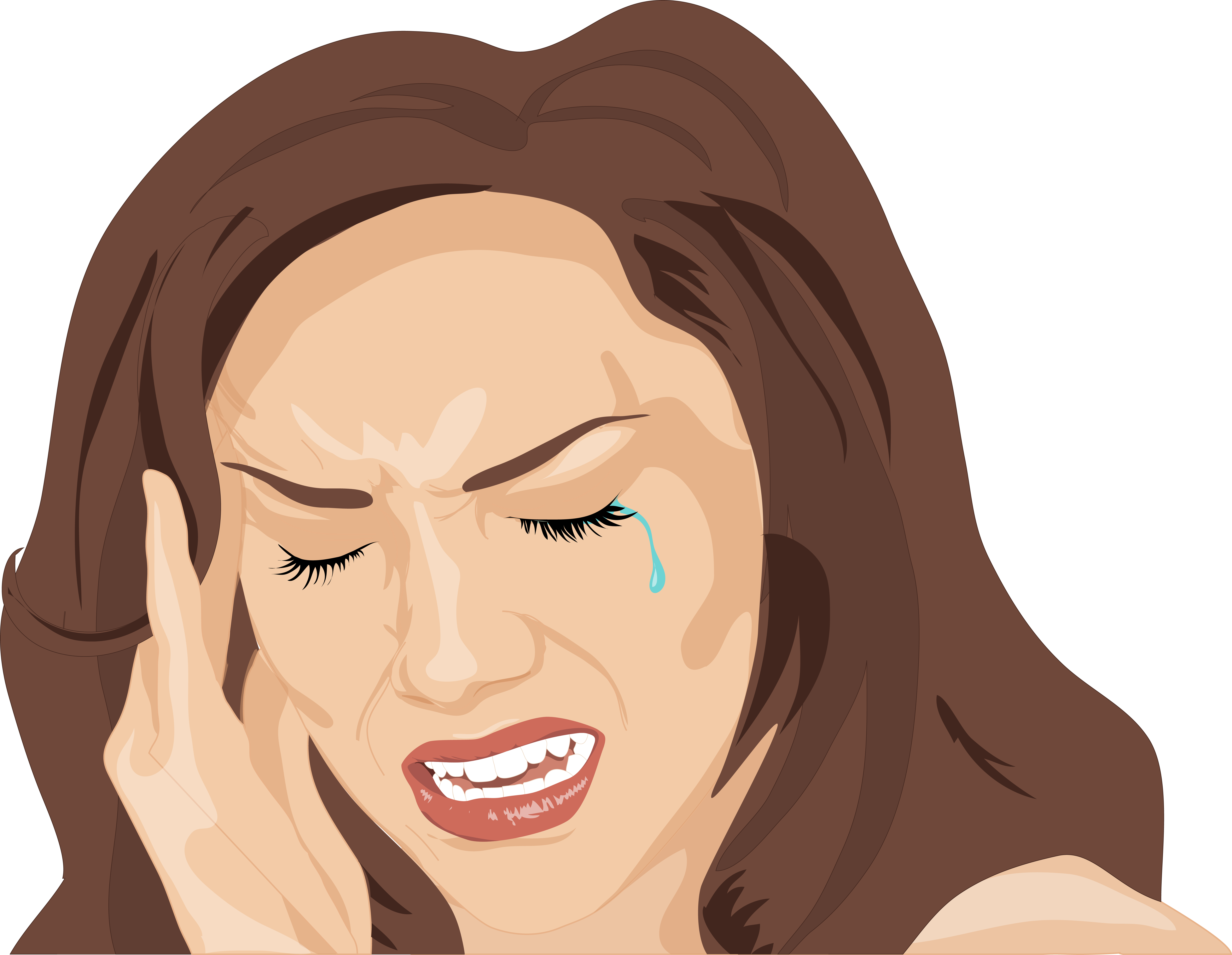
The Aura Phase: Navigating Neurological Disturbances
Approximately 25% of people with migraines experience an aura phase, which typically occurs before the main headache. This phase can last anywhere from 5 minutes to 1 hour and can involve a wide range of neurological symptoms, such as colored spots, dark spots, sparkles, flashing lights, zigzag lines, and “heat waves.” Individuals may also experience numbness, tingling, weakness, dizziness, anxiety, or confusion, as well as disturbances in speech and hearing. In rare cases, fainting and partial paralysis may occur.
The Headache Phase: Debilitating Pain and Accompanying Symptoms
The headache phase is the most characteristic and disabling part of a migraine episode. Symptoms during this phase can include pulsing pain on one or both sides of the head, sensitivity to light, noise, odors, or touch, blurred vision, nausea, vomiting, loss of appetite, and lightheadedness. The duration of this phase can vary greatly, ranging from a few hours to a few days, and can significantly impact an individual’s ability to function during this time.
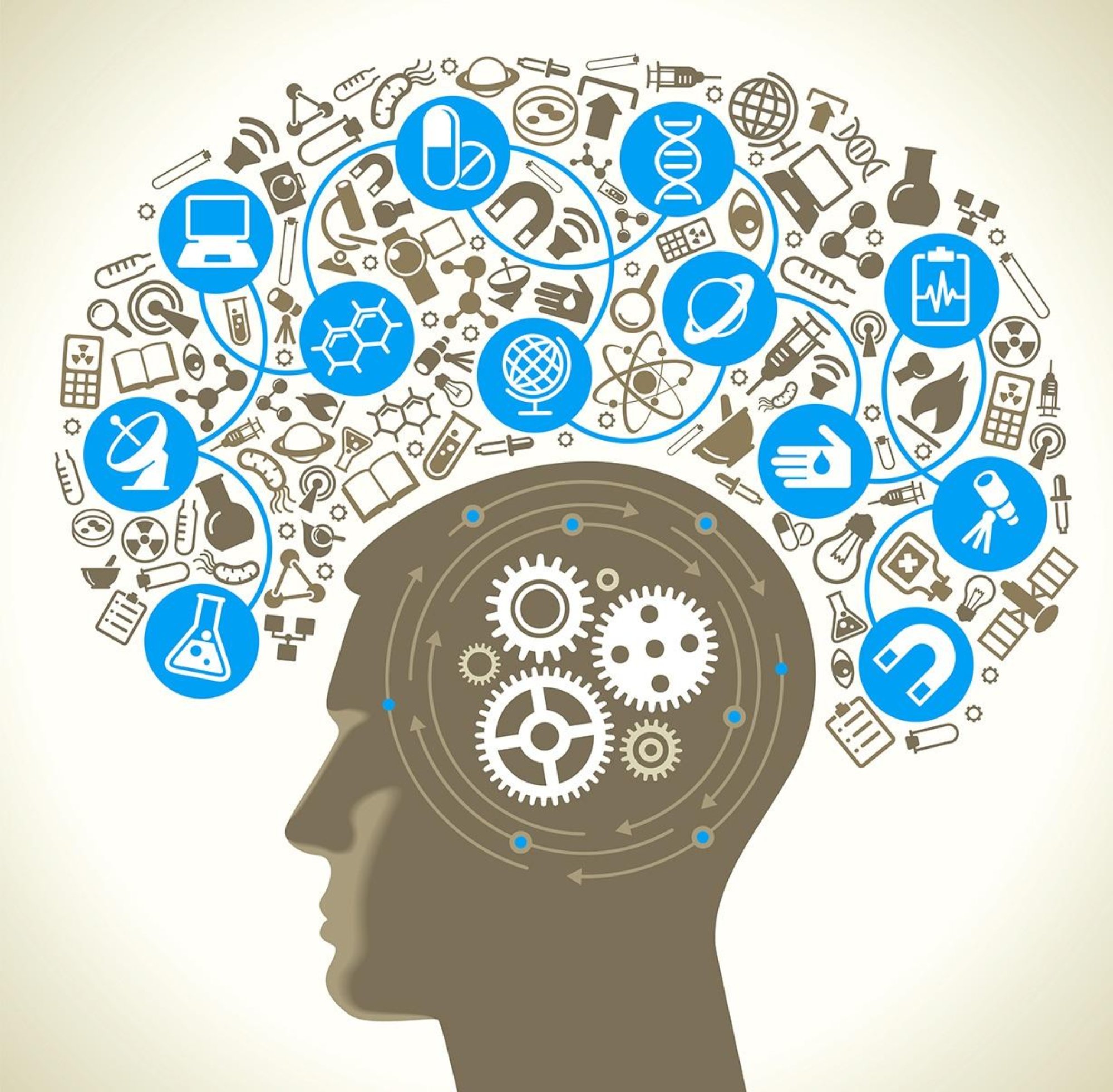
The Resolution and Recovery Phases: Gradual Relief and Lingering Effects
As the headache begins to subside, individuals may enter the resolution phase, where the pain gradually fades in intensity. Many find that taking a nap can help relieve their symptoms, and children may only need to rest for a few minutes to see results. The recovery phase that follows can include feelings of exhaustion, moodiness, dizziness, confusion, and weakness. These symptoms may last up to a day after the headache has subsided and may be similar to those experienced during the premonitory phase.
Seeking Relief and Prevention: Strategies for Managing Migraines
There is no one-size-fits-all approach to treating migraines, and the optimal treatment plan may vary depending on the individual’s experiences and the frequency and severity of their symptoms. For those with infrequent migraines, over-the-counter (OTC) medications may be sufficient to manage symptoms as they occur. However, for individuals with chronic or severe migraines, prescription medications may be necessary to both treat existing symptoms and prevent future attacks.

Embracing Home Remedies and Lifestyle Modifications
In addition to medication, there are also various home remedies and lifestyle modifications that can provide relief or help prevent migraine episodes. Seeking solace in a quiet, dimly lit room, applying a cold compress, and massaging the temples can all be effective ways to alleviate symptoms. Staying hydrated and identifying and avoiding known triggers, such as stress, certain foods, and skipped meals, can also be helpful in reducing the frequency and severity of migraines.
By understanding the various stages of a migraine episode and the range of treatment options available, individuals can take a more proactive approach to managing their condition and finding the relief they need. Remember, it’s important to work closely with a healthcare provider to develop the most effective treatment plan for your unique needs.
How Long Do Migraines Last? Timeline, Symptoms, and Treatment
Migraine episodes may last anywhere from a few hours to multiple days. Seek medical attention if your symptoms last longer.
A migraine attack typically lasts from 4 to 72 hours but can also last longer. It can be difficult to predict how long an individual episode will last, but charting its progress may help.
Migraine episodes can usually be divided into four or five distinct stages. Not all people with migraine experience each of these phases during each episode. Phases can include:
- warning or premonitory phase
- aura (not all people with migraine experience this phase, and those who do may not experience it during every episode)
- headache, or main attack
- resolution period
- recovery or postdrome stage (not all people with migraine experience this phase, and those who do may not experience it during every episode)
Some of these phases may only last briefly, whereas others may last much longer. You may not experience each phase with every episode you have. Keeping a migraine journal can help you track any patterns and prepare for what’s to come.
You may not experience each phase with every episode you have. Keeping a migraine journal can help you track any patterns and prepare for what’s to come.
Keep reading to learn more about each stage, what you can do to find relief, and when to see a doctor.
Sometimes, migraine can begin with symptoms that have absolutely nothing to do with a headache.
These symptoms can include:
- craving certain foods
- increased thirst
- stiff neck
- irritability or other mood changes
- fatigue
- anxiety
Premonitory symptoms can last anywhere from 1 to 24 hours before the aura or headache phases begin.
About 25% of people with migraine experience aura. Aura symptoms typically happen before the headache, or main attack, occurs. It often occurs 10 to 30 minutes before the headache pain begins.
Aura symptoms can last anywhere from 5 minutes to 1 hour.
Aura can include a wide range of neurological symptoms. You may see:
- colored spots
- dark spots
- sparkles or “stars”
- flashing lights
- zigzag lines
- “heat waves”
You may feel:
- numbness or tingling
- weakness
- dizziness
- anxiety or confusion
You may also experience disturbances in speech and hearing. In rare cases, fainting and partial paralysis are possible.
In rare cases, fainting and partial paralysis are possible.
Although these symptoms usually precede a migraine headache in adults, it’s possible for them to occur at the same time. Children may be more likely to experience an aura at the same time as their headache.
In some cases, aura symptoms may come and go without ever leading to a headache.
Most cases of migraine aren’t accompanied by aura symptoms. Migraine without aura moves directly from the warning stage into the headache stage.
Headache symptoms are typically the same for migraine with and without aura. They may include:
- pulsing pain on one or both sides of your head
- sensitivity to light, noise, odors, or even touch
- blurred vision
- nausea
- vomiting
- loss of appetite
- lightheadedness
- worsening pain with physical activity or other movement
During a migraine attack, many people may be unable to work or continue with their usual daily activities.
This phase is the most unpredictable, with episodes lasting anywhere from a few hours to a few days.
Many migraine headaches gradually fade in intensity. Some people find that taking a nap can help relieve their symptoms. Children may only need to rest a few minutes to see results. This is known as the resolution phase.
As the headache begins to lift, you may experience the recovery phase. This can include a feeling of exhaustion or even of elation. You may also feel:
- moody
- dizzy
- confused
- weak
Your symptoms during the recovery phase may pair with symptoms you experienced during the warning phase. For example, if you lost your appetite during the warning phase you may now find that you’re ravenous.
These symptoms may last for up to a day after your headache.
There isn’t one right way to treat a migraine. If your migraine episodes are infrequent, you may be able to use over-the-counter (OTC) medications to treat symptoms as they occur.
If your symptoms are chronic or severe, OTC treatments may not be helpful. A doctor may be able to prescribe stronger medication to treat existing symptoms and help prevent future attacks.
Home remedies
Sometimes, changing your environment may be enough to relieve the bulk of your symptoms.
If you can, seek solace in a quiet room with minimal lighting. Use lamps instead of overhead lighting, and draw the blinds or curtains to block sunlight.
The light from your phone, computer, TV, and other electronic screens may exacerbate your symptoms, so limiting your screen time may help.
Applying a cold compress and massaging your temples may also provide relief. If you aren’t feeling nauseous, upping your water intake may also be helpful.
It can also help to track, identify, and avoid what’s triggering your symptoms. This may help reduce symptoms and prevent them from recurring.
Common triggers can include:
- stress
- certain foods
- skipped meals
- drinks with alcohol or caffeine
- certain medications
- not getting enough sleep
- hormonal changes
- weather changes
- concussions and other head injuries
OTC medication
OTC pain relievers may help with symptoms that are mild or infrequent. Common options include:
Common options include:
- aspirin (Bayer)
- ibuprofen (Advil)
- naproxen (Aleve)
If your symptoms are more severe, you may want to try a medication that combines a pain reliever and caffeine, such as Excedrin. Caffeine has the potential to both trigger and treat migraine episodes, so you may want to avoid this product unless you’re sure that caffeine isn’t a trigger for you.
These medications shouldn’t be used more than 10 to 15 days per month. Doing so can lead to medication overuse headaches.
Prescription medication
If OTC options aren’t working, you may decide to talk with a doctor.
They may be able to prescribe stronger, more targeted medications to help ease the pain.
This may include triptans, such as:
- sumatriptan (Imitrex, Treximet)
- zolmitriptan (Zomig)
- eletriptan (Relpax)
- rizatriptan (Maxalt)
- almotriptan
If your migraine episodes are chronic, a doctor may also prescribe medication to help prevent future episodes. These medications may include:
These medications may include:
- Calcitonin-gene-related peptide (CGRP) antagonists: rimegepant (Nurtec ODT) or ubrogepant (Ubrelvy)
- Selective serotonin 1F receptor agonist: lasmiditan (Reyvow)
They may also prescribe medication to help relieve nausea.
If you’re experiencing a migraine episode for the first time, you may be able to relieve your symptoms with home remedies and OTC medications.
But if you’ve had multiple migraine episodes, you may want to make an appointment with a doctor. They can assess your symptoms and develop a treatment plan tailored to your individual needs.
You should see your doctor right away if:
- Your symptoms began after a head injury.
- Your symptoms last longer than 72 hours.
- You’re 40 years old or older and are experiencing a migraine for the first time.
- You develop a sudden severe headache.
- You’re over the age of 50.
- Your headaches have changed in quality.

- You have a headache that occurs with neurological symptoms, such as weakness on one side of the body, numbness, loss of vision, loss of consciousness.
A migraine episode typically lasts anywhere from 4 to 72 hours.
It consists of four or five phases during which you may experience other symptoms. During the headache phase, you may experience throbbing pain and sensitivity to light, sound, smell, or touch.
A doctor can prescribe prescription medication that may help relieve pain and prevent future episodes.
How Long Do Migraines Last? Timeline, Symptoms, and Treatment
Migraine episodes may last anywhere from a few hours to multiple days. Seek medical attention if your symptoms last longer.
A migraine attack typically lasts from 4 to 72 hours but can also last longer. It can be difficult to predict how long an individual episode will last, but charting its progress may help.
Migraine episodes can usually be divided into four or five distinct stages.:max_bytes(150000):strip_icc():format(webp)/migraine-prevention-4583158-5c8696c1c9e77c0001a676a2.png) Not all people with migraine experience each of these phases during each episode. Phases can include:
Not all people with migraine experience each of these phases during each episode. Phases can include:
- warning or premonitory phase
- aura (not all people with migraine experience this phase, and those who do may not experience it during every episode)
- headache, or main attack
- resolution period
- recovery or postdrome stage (not all people with migraine experience this phase, and those who do may not experience it during every episode)
Some of these phases may only last briefly, whereas others may last much longer. You may not experience each phase with every episode you have. Keeping a migraine journal can help you track any patterns and prepare for what’s to come.
Keep reading to learn more about each stage, what you can do to find relief, and when to see a doctor.
Sometimes, migraine can begin with symptoms that have absolutely nothing to do with a headache.
These symptoms can include:
- craving certain foods
- increased thirst
- stiff neck
- irritability or other mood changes
- fatigue
- anxiety
Premonitory symptoms can last anywhere from 1 to 24 hours before the aura or headache phases begin.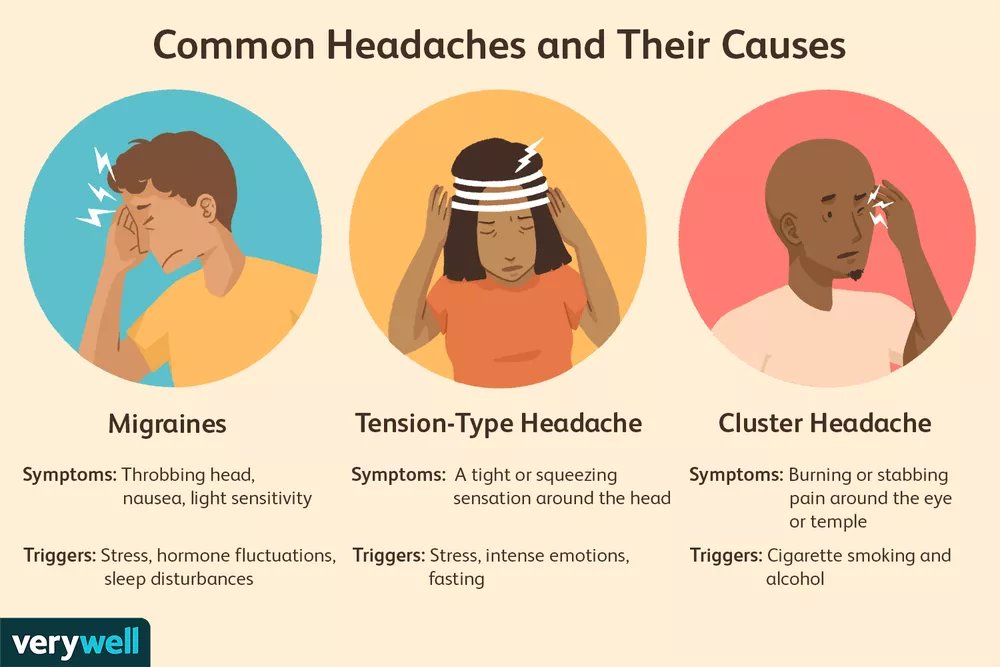
About 25% of people with migraine experience aura. Aura symptoms typically happen before the headache, or main attack, occurs. It often occurs 10 to 30 minutes before the headache pain begins.
Aura symptoms can last anywhere from 5 minutes to 1 hour.
Aura can include a wide range of neurological symptoms. You may see:
- colored spots
- dark spots
- sparkles or “stars”
- flashing lights
- zigzag lines
- “heat waves”
You may feel:
- numbness or tingling
- weakness
- dizziness
- anxiety or confusion
You may also experience disturbances in speech and hearing. In rare cases, fainting and partial paralysis are possible.
Although these symptoms usually precede a migraine headache in adults, it’s possible for them to occur at the same time. Children may be more likely to experience an aura at the same time as their headache.
In some cases, aura symptoms may come and go without ever leading to a headache.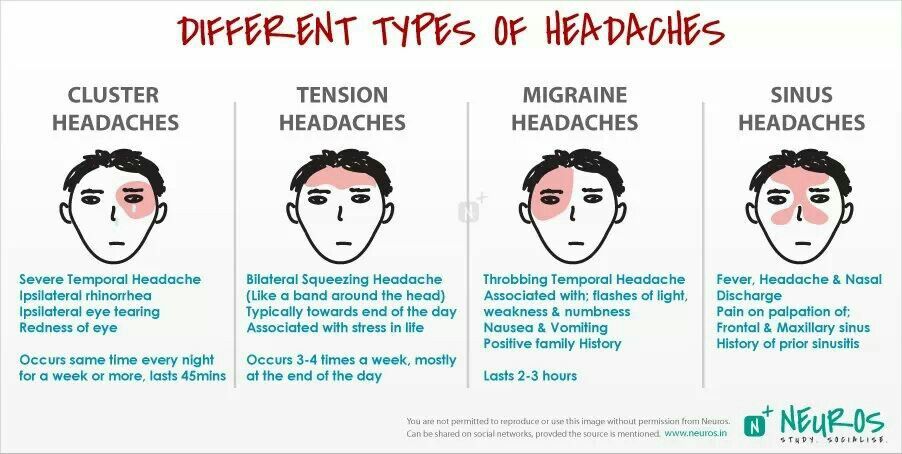
Most cases of migraine aren’t accompanied by aura symptoms. Migraine without aura moves directly from the warning stage into the headache stage.
Headache symptoms are typically the same for migraine with and without aura. They may include:
- pulsing pain on one or both sides of your head
- sensitivity to light, noise, odors, or even touch
- blurred vision
- nausea
- vomiting
- loss of appetite
- lightheadedness
- worsening pain with physical activity or other movement
During a migraine attack, many people may be unable to work or continue with their usual daily activities.
This phase is the most unpredictable, with episodes lasting anywhere from a few hours to a few days.
Many migraine headaches gradually fade in intensity. Some people find that taking a nap can help relieve their symptoms. Children may only need to rest a few minutes to see results. This is known as the resolution phase.
As the headache begins to lift, you may experience the recovery phase. This can include a feeling of exhaustion or even of elation. You may also feel:
This can include a feeling of exhaustion or even of elation. You may also feel:
- moody
- dizzy
- confused
- weak
Your symptoms during the recovery phase may pair with symptoms you experienced during the warning phase. For example, if you lost your appetite during the warning phase you may now find that you’re ravenous.
These symptoms may last for up to a day after your headache.
There isn’t one right way to treat a migraine. If your migraine episodes are infrequent, you may be able to use over-the-counter (OTC) medications to treat symptoms as they occur.
If your symptoms are chronic or severe, OTC treatments may not be helpful. A doctor may be able to prescribe stronger medication to treat existing symptoms and help prevent future attacks.
Home remedies
Sometimes, changing your environment may be enough to relieve the bulk of your symptoms.
If you can, seek solace in a quiet room with minimal lighting. Use lamps instead of overhead lighting, and draw the blinds or curtains to block sunlight.
The light from your phone, computer, TV, and other electronic screens may exacerbate your symptoms, so limiting your screen time may help.
Applying a cold compress and massaging your temples may also provide relief. If you aren’t feeling nauseous, upping your water intake may also be helpful.
It can also help to track, identify, and avoid what’s triggering your symptoms. This may help reduce symptoms and prevent them from recurring.
Common triggers can include:
- stress
- certain foods
- skipped meals
- drinks with alcohol or caffeine
- certain medications
- not getting enough sleep
- hormonal changes
- weather changes
- concussions and other head injuries
OTC medication
OTC pain relievers may help with symptoms that are mild or infrequent. Common options include:
- aspirin (Bayer)
- ibuprofen (Advil)
- naproxen (Aleve)
If your symptoms are more severe, you may want to try a medication that combines a pain reliever and caffeine, such as Excedrin. Caffeine has the potential to both trigger and treat migraine episodes, so you may want to avoid this product unless you’re sure that caffeine isn’t a trigger for you.
Caffeine has the potential to both trigger and treat migraine episodes, so you may want to avoid this product unless you’re sure that caffeine isn’t a trigger for you.
These medications shouldn’t be used more than 10 to 15 days per month. Doing so can lead to medication overuse headaches.
Prescription medication
If OTC options aren’t working, you may decide to talk with a doctor.
They may be able to prescribe stronger, more targeted medications to help ease the pain.
This may include triptans, such as:
- sumatriptan (Imitrex, Treximet)
- zolmitriptan (Zomig)
- eletriptan (Relpax)
- rizatriptan (Maxalt)
- almotriptan
If your migraine episodes are chronic, a doctor may also prescribe medication to help prevent future episodes. These medications may include:
- Calcitonin-gene-related peptide (CGRP) antagonists: rimegepant (Nurtec ODT) or ubrogepant (Ubrelvy)
- Selective serotonin 1F receptor agonist: lasmiditan (Reyvow)
They may also prescribe medication to help relieve nausea.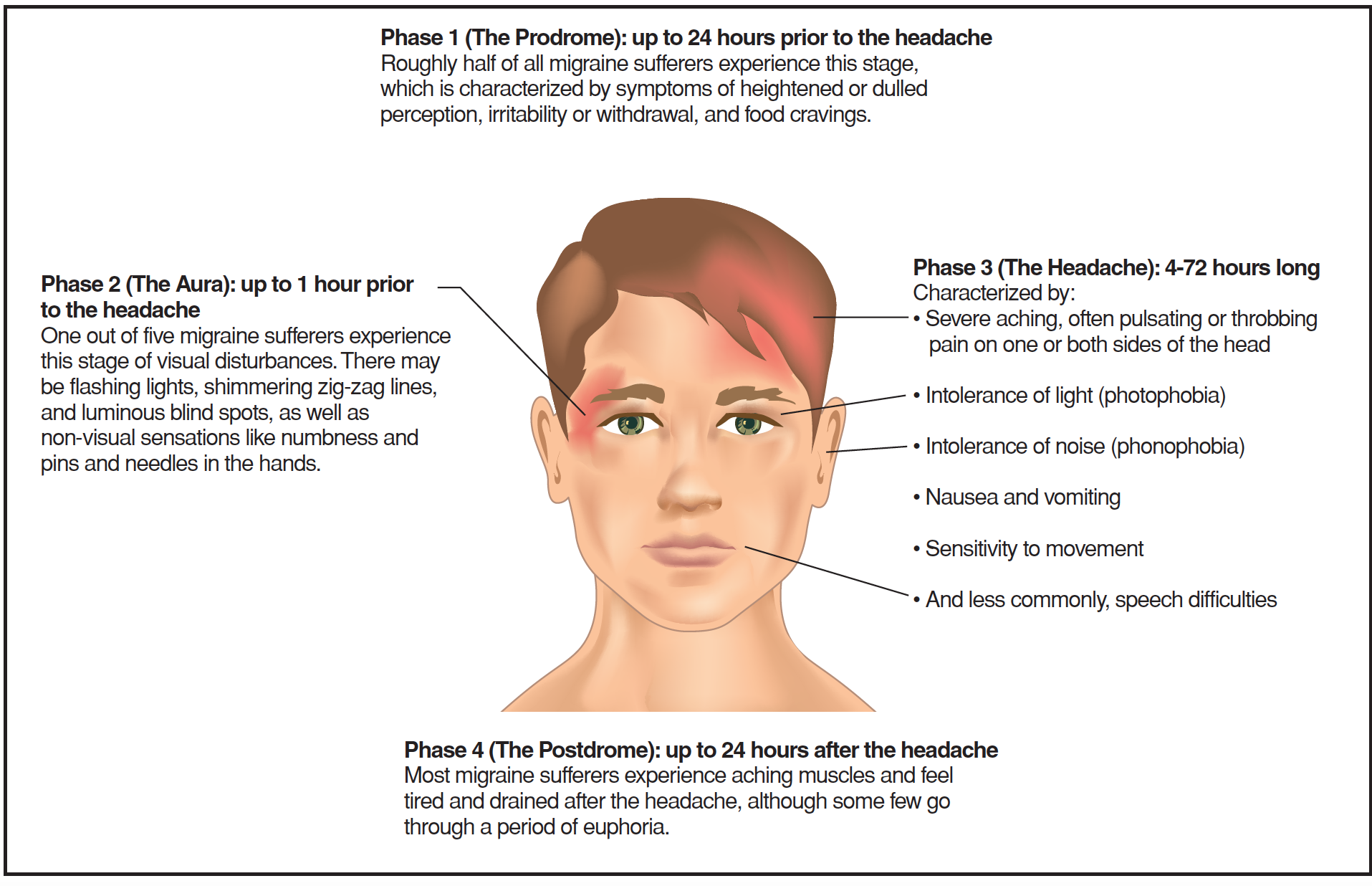
If you’re experiencing a migraine episode for the first time, you may be able to relieve your symptoms with home remedies and OTC medications.
But if you’ve had multiple migraine episodes, you may want to make an appointment with a doctor. They can assess your symptoms and develop a treatment plan tailored to your individual needs.
You should see your doctor right away if:
- Your symptoms began after a head injury.
- Your symptoms last longer than 72 hours.
- You’re 40 years old or older and are experiencing a migraine for the first time.
- You develop a sudden severe headache.
- You’re over the age of 50.
- Your headaches have changed in quality.
- You have a headache that occurs with neurological symptoms, such as weakness on one side of the body, numbness, loss of vision, loss of consciousness.
A migraine episode typically lasts anywhere from 4 to 72 hours.
It consists of four or five phases during which you may experience other symptoms. During the headache phase, you may experience throbbing pain and sensitivity to light, sound, smell, or touch.
During the headache phase, you may experience throbbing pain and sensitivity to light, sound, smell, or touch.
A doctor can prescribe prescription medication that may help relieve pain and prevent future episodes.
How long migraine lasts in women with headache. Is there a difference for men?
How long migraine lasts in women with headache. Is there a difference for men?
Gimranov Rinat Fazylzhanovich
Neurologist, neurophysiologist, experience – 33 years;
Professor of Neurology, MD;
Clinic for Rehabilitation Neurology. About the author
Publication date: September 20, 2019
Updated: May 16, 2022
A headache is a problem that almost every inhabitant of the earth faces from time to time. There can be many reasons for this.
Article content:
- 1 Phases of migraine
- 1.1 Prodromal
- 1.2 Aura
- 1.3 Headache
- 1.4 Postdromal 9002 3
- 2 Duration depending on the species
- 2.
 1 Simple
1 Simple - 2.2 Classic
- 2.3 Associate
- 2.
- 3 References
Phases of migraine
Neurologists distinguish 4 stages of the course of the disease. It should be borne in mind that in a particular case, not all of them may appear. Only 3, 4 stages can be clearly distinguished, and 1, 2 are practically not manifested in any way.
Prodromal
The very beginning of a migraine attack. During this period, a spasm of the vascular system of the brain occurs, which after a while will manifest itself as pain. Some people at this stage can already identify the onset of pain by the symptoms that appear:
- sudden irritability, aggressiveness, sudden mood swings;
- sensation of drowsiness, physical fatigue;
- information ceases to be perceived, remembered;
- reduced ability to focus;
- sudden attacks of hunger, thirst.
It can take from 30 minutes to 3 hours from the onset of spasm to the onset of pain. People who often experience seizures already understand from these symptoms that their head will soon ache. Therefore, they manage to take the medicine on time, stop the attack.
People who often experience seizures already understand from these symptoms that their head will soon ache. Therefore, they manage to take the medicine on time, stop the attack.
Aura
A specific set of signs that does not always appear and not in everyone. On average, only 25% of patients experience these unpleasant sensations that precede the onset of pain. Another 15% encounter them periodically.
Characteristic manifestations:
- appearance of flickering dots or spots in the eyes;
- visual field narrowing;
- change in the perception of color, size of objects;
- nausea;
- auditory hallucinations.
Headache
There is a throbbing pain in a certain part of the head. As a rule, in the temple or near the eye. In some patients, the epicenter of pain moves depending on the attack or even during 1 attack. The pain is pulsating, then rising, then falling. Sharp sharp pain is rare.
Patients often experience concomitant signs of an attack.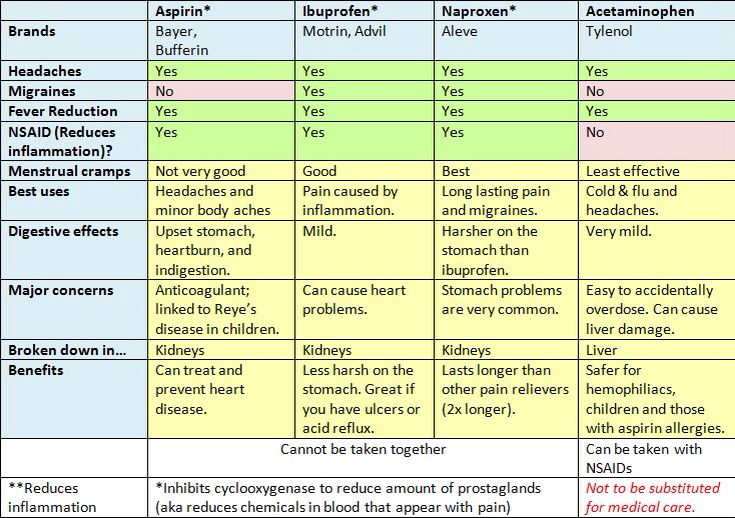 Even according to them, the duration of a migraine cannot be predicted in advance; it can last from several hours to several days.
Even according to them, the duration of a migraine cannot be predicted in advance; it can last from several hours to several days.
Sometimes there is a series of migraine attacks: short bursts of pain for several hours, several days in a row (up to 10). Then the total duration reaches a week. In this case, you must consult a doctor.
Postdromal
Recovery period or “migraine hangover”. The pain subsided, but the body needs time to recover. As a rule, during the day there is weakness, absent-mindedness. During this time, vision is restored, nausea, sound hallucinations pass.
If such symptoms do not disappear within a few hours of the pain subsiding, another attack should be expected.
Duration depending on the type
Depending on the type of disease, it can be predicted how long a head migraine attack will last in a man or woman, how many hours or days a headache can last and how long the break between attacks lasts.
The duration of an attack directly depends on the causes that caused it, the physical condition of the person, predisposition.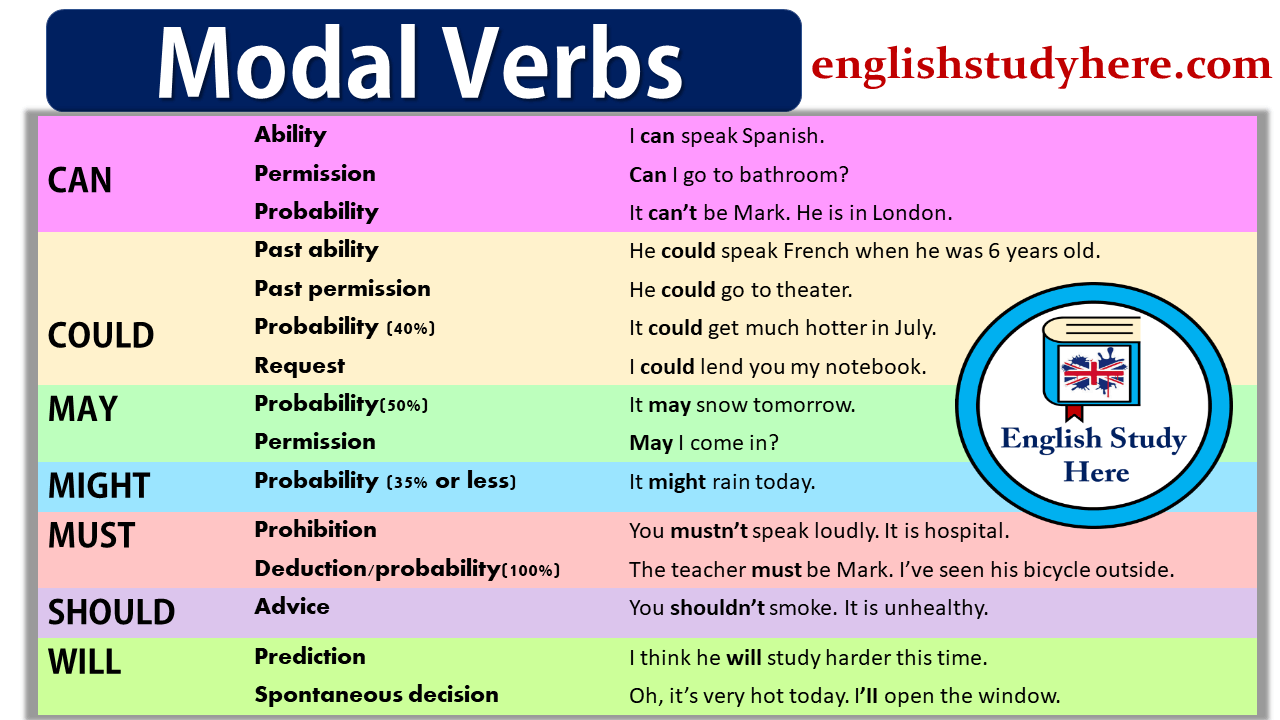
A migraine attack can last several days in a row: 2, 3, 4, 5, weeks, depending on the causes. In each of the cases, a selected treatment is necessary, an urgent appeal to the hospital is possible.
Simple appearance
It is characterized by the absence of an aura, any symptoms that anticipate a pain attack. It is considered dangerous, since the pain occurs suddenly, making it impossible to take the medicine in advance.
Pain is felt in the area of the temples, eyes, occasionally in the back of the head. Temporary vasospasm passes quickly, but may return after a short time.
Classic
In the classical course of an attack, the symptoms of the aura come before the pain. According to their activity, you can roughly predict how long the migraine will pass and how many days it will last.
The patient experiences nausea and may vomit with temporary relief. There is increased irritability, sudden changes in mood, physical weakness.
Attacks of the classical type are not considered dangerous if their duration does not exceed several hours, and the frequency is not more than 2-3 times a month.
Associate
One of the complex variants of the disease, as it does not proceed by itself, but is provoked by the pathological state of the body. Or he himself causes complications from the side of health.
Common forms:
- Ophthalmic with visual impairment. The optic nerve is affected, causing problems with vision. Black dots, spots appear, the field of vision narrows, in difficult cases temporary blindness is observed. All symptoms are reversible, disappear after an hour or two after the attack.
- Hemiplegic, when the sensation of different parts of the body disappears. There may be a tingling sensation, goosebumps in the skin and muscles.
- Cerebellar, caused by injuries leading to oxygen starvation of the brain.
- Heart shape. Side effect – complications in the work of the cardiovascular system are irreversible. They are noted with a duration of a migraine attack of several days.
- Vestibular, accompanied by disorders of the vestibular apparatus.
 The patient becomes clumsy, it is difficult for him to navigate in space, there is a constant ringing in his ears.
The patient becomes clumsy, it is difficult for him to navigate in space, there is a constant ringing in his ears.
It is impossible to predict in advance how long a migraine will last, since an attack, depending on the concomitant reasons, can last 10 minutes, or maybe a day or two.
Migraine should not last more than a week, if the attack lasts 3 days, hospitalization is indicated, during which the doctor will tell you what to do
References
Was this article helpful?
You can subscribe to our newsletter and learn a lot of interesting things about the treatment of the disease, scientific achievements and innovative solutions:
Your e-mail
I agree with the privacy policy and the processing of personal data
Please leave this field empty.
We’re sorry!
How can this article be improved?
Please leave this field empty.
For more information, you can check with neurologists on our forum!Go to the Forum
If you have any questions, ask your doctors on our forum!
Go to forum
ADD/VIEW COMMENTS
Gimranov Rinat Fazylzhanovich
Make an appointment with a specialist
×
Is it possible to die from a migraine? Headache subjective experience and treatment
- Home
- >Headache and migraine subjective experience
Is it possible to get sick leave for migraine today?
After the classification of headaches appeared in 1988, the doctors said: “Oh, there are migraines!”, and there are other types of headaches, now it is legally possible to receive a sick leave. This problem is being studied more and more every year in the world, patient organizations are being created that try to interact with employers with the help of trade unions. True, in our country I do not see great success in this direction, but in Europe this movement is developing actively.
This problem is being studied more and more every year in the world, patient organizations are being created that try to interact with employers with the help of trade unions. True, in our country I do not see great success in this direction, but in Europe this movement is developing actively.
Our clinic has been operating for 20 years, and, according to our modest statistics, there are no fewer patients, but today we have accepted – this figure is in our database – 51 thousand people. And in Russia there are already a dozen similar clinics, although in tiny Italy there are 36 headache clinics.
How to determine that a headache is already a disease? Where is the border? Maybe this is a temporary phenomenon that is not yet considered a disease.
The classification that exists today is very simple – there are primary headaches that are not associated with any damage to the body. Although we may not yet know what changes occur in the brain at the time of headaches, this topic has not yet been studied.
Primary headache refers to migraine (periodic attacks of moderate or severe headache). It is usually localized in one half of the head, has a pulsating character, lasts from two hours to three days. Accompanied by nausea, vomiting, in a third of patients there is a short-term visual impairment. The underlying mechanisms of the disease are not fully known. Then there is a tension headache (pressing pain in the head of varying intensity), probably every person has experienced it at least once in their life. Cluster headache (a pronounced series of attacks of pain syndrome in the areas of the projection of the brain on the walls of the cranium, lasting from several weeks to several months). The strength of the pain is so great that there have even been cases of suicide attempts.
And there is the concept of “secondary headache”. For example, we have the flu, we may have a headache, we have recovered, and the headache is gone. That is, a headache that is clearly associated with some kind of condition. When the underlying disease worsens, the headache increases, and when it improves, it decreases.
When the underlying disease worsens, the headache increases, and when it improves, it decreases.
There was a breakthrough when the international neurological community gave an official definition of the state of pain – this is a subjective experience, we cannot but believe the person. If a person says that he is in pain, we are obliged to believe him. Today we cannot say to a patient: “Well, you know, who doesn’t have a headache, go to work!” The doctor is obliged to respond clearly.
Which doctor treats headaches? Therapist or neurologist?
In general, general practitioners all over the world do this, it has historically happened in our country that neurologists do this. But general practitioners and therapists are still in the lead in terms of negotiability. That is, if I am worried about a headache, should I go to a general practitioner in a district clinic? Yes. And he has to figure it out, if it’s a difficult case and he doesn’t have the qualifications to understand what’s going on, he has to send you to a narrow specialist, they’re called cephalologists./migraine-with-aura-headache-41719661-5baaaf88c9e77c002c38eeae.png)
Are there such doctors in district polyclinics?
In Moscow, not in all polyclinics, but in the districts there are several offices. There is a headache room in the Southern Administrative District, it is state-owned and operates on the basis of the district polyclinic. And if a person does not have the financial ability to go to a private clinic, he can ask for a referral to such offices. There are also pain departments at the Sklifosovsky Institute, at the All-Russian Center for Surgery named after Petrovsky and at the First Med on Pirogovka. These are federal institutions where people can be treated with a referral from the district clinic.
How is a person treated with a headache?
To begin with, it is determined whether the headache is primary or not. It is most important. If the pain arose as a result of something, then this “something” must be removed and the underlying disease treated. Headache is treated taking into account the main diagnosis, today the classification is very large and describes more than 160 types of headache.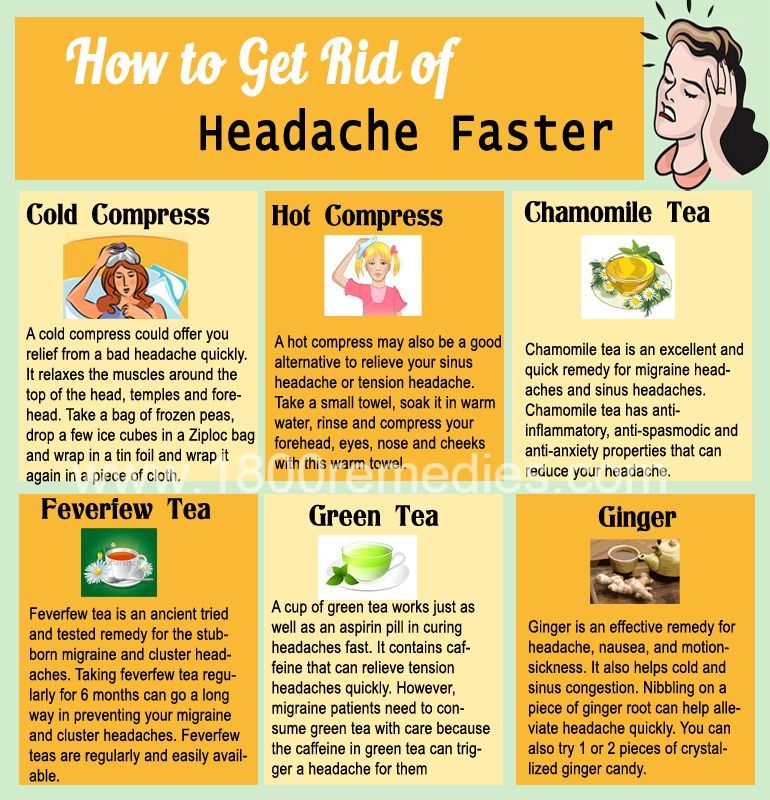 It is clear that primary care specialists in the district polyclinic cannot and should not understand all this diversity, their task is to provide first aid, and if the situation worsens, narrow-profile people should join. Treatment of any kind of headache, secondary or primary, always consists of two blocks. The first is the treatment of the attack itself, the second is prevention. Legally, this issue is interpreted as follows: if a person has more seizures than twice a week, he can be prescribed preventive therapy. But people are all different, with different pain thresholds, and pain, as I said, is a subjective phenomenon. There are people who have headaches every day. Then the doctor puts the highest score in the questionnaire – 10 (questionnaires with scores are used to classify the severity of the headache). At the same time, the person to the question “Can you work?” replies: “Well, of course, I have to do it.” Another person with 2-3 pain can’t do anything because that’s how they rate their pain.
It is clear that primary care specialists in the district polyclinic cannot and should not understand all this diversity, their task is to provide first aid, and if the situation worsens, narrow-profile people should join. Treatment of any kind of headache, secondary or primary, always consists of two blocks. The first is the treatment of the attack itself, the second is prevention. Legally, this issue is interpreted as follows: if a person has more seizures than twice a week, he can be prescribed preventive therapy. But people are all different, with different pain thresholds, and pain, as I said, is a subjective phenomenon. There are people who have headaches every day. Then the doctor puts the highest score in the questionnaire – 10 (questionnaires with scores are used to classify the severity of the headache). At the same time, the person to the question “Can you work?” replies: “Well, of course, I have to do it.” Another person with 2-3 pain can’t do anything because that’s how they rate their pain. And, for example, if they have a migraine attack, they can collapse completely with a severe attack. They rate their pain at 3 points, and a severe attack is 10 points, when it is impossible to tear your head off the pillow completely. Of course, it is very important to choose the right treatment regimen, it is individual, as well as the right drugs for stopping seizures. For the relief of migraine attacks, there are narrowly targeted drugs. By the way, we have a colossal problem – almost all painkillers are sold in the public domain in pharmacies. As a result, we got another type of headache – drug-induced. People uncontrollably take painkillers, and there comes a point when they develop addiction, and the head hurts already from taking the pills. This is a problem that, from my point of view, should be actively covered, because self-treatment is a dangerous thing, you won’t even notice how you move from one category to another. People who have episodic headaches run into a pharmacy, buy pills, then lose control and no longer understand where the border is when the head hurts six times a month, then sixteen, and then twenty-six.
And, for example, if they have a migraine attack, they can collapse completely with a severe attack. They rate their pain at 3 points, and a severe attack is 10 points, when it is impossible to tear your head off the pillow completely. Of course, it is very important to choose the right treatment regimen, it is individual, as well as the right drugs for stopping seizures. For the relief of migraine attacks, there are narrowly targeted drugs. By the way, we have a colossal problem – almost all painkillers are sold in the public domain in pharmacies. As a result, we got another type of headache – drug-induced. People uncontrollably take painkillers, and there comes a point when they develop addiction, and the head hurts already from taking the pills. This is a problem that, from my point of view, should be actively covered, because self-treatment is a dangerous thing, you won’t even notice how you move from one category to another. People who have episodic headaches run into a pharmacy, buy pills, then lose control and no longer understand where the border is when the head hurts six times a month, then sixteen, and then twenty-six. Among our patients there are “champions” who took 20-30 tablets per day! And from year to year there are more such people. It is clear that it is difficult to take time off from work, the level of stress is very high, people hold on to their jobs and at the same time are not sure of medical care, they think that they themselves know what helps them. But this circle closes very quickly, and it is already very difficult, almost impossible for primary care physicians to help such patients. Doctors in the clinic also have an appointment that lasts only 12 minutes; there is no way to question such a patient and understand the cause-and-effect relationships in such a short time.
Among our patients there are “champions” who took 20-30 tablets per day! And from year to year there are more such people. It is clear that it is difficult to take time off from work, the level of stress is very high, people hold on to their jobs and at the same time are not sure of medical care, they think that they themselves know what helps them. But this circle closes very quickly, and it is already very difficult, almost impossible for primary care physicians to help such patients. Doctors in the clinic also have an appointment that lasts only 12 minutes; there is no way to question such a patient and understand the cause-and-effect relationships in such a short time.
What is the diagnosis of headache other than the stories of the person himself?
There is a certain percentage of headaches associated with neoplasms. By the way, it is very small, only 2% per year, but it is still someone’s life, and everything here is built very clearly. The doctor interrogates and examines the patient, it can be both a neurologist and a therapist, and if they do not see any neurological signs, then they may not prescribe any diagnosis. There is such a conditional corridor – 30 days. If we treat a patient for 30 days and do not get any effect, the symptoms do not go away or even increase, these are direct indications to send the patient for tomography. Now overdiagnosis (MRI today, everyone can do without any referral and indications), which we plunged into, sometimes we don’t helps, but creates additional problems. For example, we do an MRI to a person, we find some foci in the brain. A sensitive patient immediately panics: “Ahh, my brain is breaking down.” His mood deteriorates, he begins to look for the cause, and very often such foci can be genetic, the same foci were in his mother, father, grandmother. Of course, this is an important study, but often it does not give a causal relationship with headache, and this information has created a problem. In the West, the Nostress! movement is now popular, that is, we do not do additional surveys so as not to have unnecessary information. And then they do a study of the vessels to the patient, they find that one vessel is a little narrower than the other, and that’s all – already a million questions: “Here I already have one vessel, and therefore my head hurts.
There is such a conditional corridor – 30 days. If we treat a patient for 30 days and do not get any effect, the symptoms do not go away or even increase, these are direct indications to send the patient for tomography. Now overdiagnosis (MRI today, everyone can do without any referral and indications), which we plunged into, sometimes we don’t helps, but creates additional problems. For example, we do an MRI to a person, we find some foci in the brain. A sensitive patient immediately panics: “Ahh, my brain is breaking down.” His mood deteriorates, he begins to look for the cause, and very often such foci can be genetic, the same foci were in his mother, father, grandmother. Of course, this is an important study, but often it does not give a causal relationship with headache, and this information has created a problem. In the West, the Nostress! movement is now popular, that is, we do not do additional surveys so as not to have unnecessary information. And then they do a study of the vessels to the patient, they find that one vessel is a little narrower than the other, and that’s all – already a million questions: “Here I already have one vessel, and therefore my head hurts. ” And this is not so, there is no such connection. A 50-year-old man lives normally with this vessel, all vessels cannot be the same. Sometimes such facts confuse even specialists, which leads to incorrect diagnosis. Accordingly, the correct treatment is not prescribed. Therefore, sometimes a doctor does not prescribe an MRI, not because he is sorry, but he does not see much point in this. Although psychologically and humanly I understand this, after a number of famous people died from a brain tumor, we have a total fear of neoplasms, it is very difficult to calm people down. Until the patient himself goes to the MRI and makes sure that he does not have a tumor, it is almost impossible to interact with him further. Although MRI also has errors. All diagnostics are based on the examination and the patient’s story, right? But then we get into the viscous area of the degree of adequacy of the patient. There are psychoses, phantom pains. There are hypochondriacs who make up half of the symptoms.
” And this is not so, there is no such connection. A 50-year-old man lives normally with this vessel, all vessels cannot be the same. Sometimes such facts confuse even specialists, which leads to incorrect diagnosis. Accordingly, the correct treatment is not prescribed. Therefore, sometimes a doctor does not prescribe an MRI, not because he is sorry, but he does not see much point in this. Although psychologically and humanly I understand this, after a number of famous people died from a brain tumor, we have a total fear of neoplasms, it is very difficult to calm people down. Until the patient himself goes to the MRI and makes sure that he does not have a tumor, it is almost impossible to interact with him further. Although MRI also has errors. All diagnostics are based on the examination and the patient’s story, right? But then we get into the viscous area of the degree of adequacy of the patient. There are psychoses, phantom pains. There are hypochondriacs who make up half of the symptoms. How do you identify and share all this? How do you understand how the patient adequately tells you?
How do you identify and share all this? How do you understand how the patient adequately tells you?
Back to where I started. Complaints are subjective. There are types of headaches associated with mental disorders. In general, it is normal to worry about your health. The only thing is that our anxiety, which should carry security functions, one day can break all barriers, become a disease and destroy our brain with fears. Then a specific treatment is prescribed – sessions of psychotherapy. Of course, if a person has no money or relatives are ill, there are problems, it is wrong to recommend a psychotherapist to him when he would only survive. It is necessary to choose the appropriate therapy so that a person can be in society and adequately solve his problems. And so visiting a psychotherapist could be recommended to all residents of the metropolis.
Is the treatment of headaches based on painkillers?
Not only. Migraine, for example, is a genetic disease (by 70%), so far we cannot do anything with genetics. In our clinic, we are already seeing the third generation of patients in several families. Grandmothers were treated with us, then mothers, now the girls have already come (in most cases, women suffer from migraines), and the medical history is right under the blueprint. We must influence what we can – remove provoking factors. We will not, of course, give a person stupid advice not to be nervous, but we can say that if he is nervous, then let him take valerian so as not to further deepen the stress. Or, if you know you’re in for an experience, take something proactively so you don’t make the situation too dramatic. It is necessary to pay attention to neck pain, sleep and appetite disturbances, and so on. Accordingly, if a person has a headache and sleep disturbance, then until we improve the quality of his sleep, we will not be able to move forward in treatment.
In our clinic, we are already seeing the third generation of patients in several families. Grandmothers were treated with us, then mothers, now the girls have already come (in most cases, women suffer from migraines), and the medical history is right under the blueprint. We must influence what we can – remove provoking factors. We will not, of course, give a person stupid advice not to be nervous, but we can say that if he is nervous, then let him take valerian so as not to further deepen the stress. Or, if you know you’re in for an experience, take something proactively so you don’t make the situation too dramatic. It is necessary to pay attention to neck pain, sleep and appetite disturbances, and so on. Accordingly, if a person has a headache and sleep disturbance, then until we improve the quality of his sleep, we will not be able to move forward in treatment.
Headaches have triggers such as alcohol, cheese, citrus fruits, chocolate and other foods. We need to keep an eye on this and clean them up. And then there are funny cases when a person comes, complains of a terrible headache, you ask him if he associates this pain with some factors, he says: “Yes, my head hurts after drinking red wine.” The conclusion is obvious. You explain to him how red wine affects the blood vessels, you advise him to exclude it. To which he replies, “That’s impossible. I love him,” and there’s nothing I can do about it, that’s the patient’s choice. Often people know what causes their headaches. So first we remove provocateurs.
And then there are funny cases when a person comes, complains of a terrible headache, you ask him if he associates this pain with some factors, he says: “Yes, my head hurts after drinking red wine.” The conclusion is obvious. You explain to him how red wine affects the blood vessels, you advise him to exclude it. To which he replies, “That’s impossible. I love him,” and there’s nothing I can do about it, that’s the patient’s choice. Often people know what causes their headaches. So first we remove provocateurs.
If a person develops a headache, for example, at work, you need to look: maybe the ergonomics of the workplace is not good? Maybe you need to move the computer, turn the monitor to make it comfortable, change the chair, add lighting, and – oh, miracle! – the headache has passed or has become much less disturbing. Often the head hurts from improperly selected glasses or lenses. Go to the optometrist, change your glasses – these are simple things that do not come to mind to check.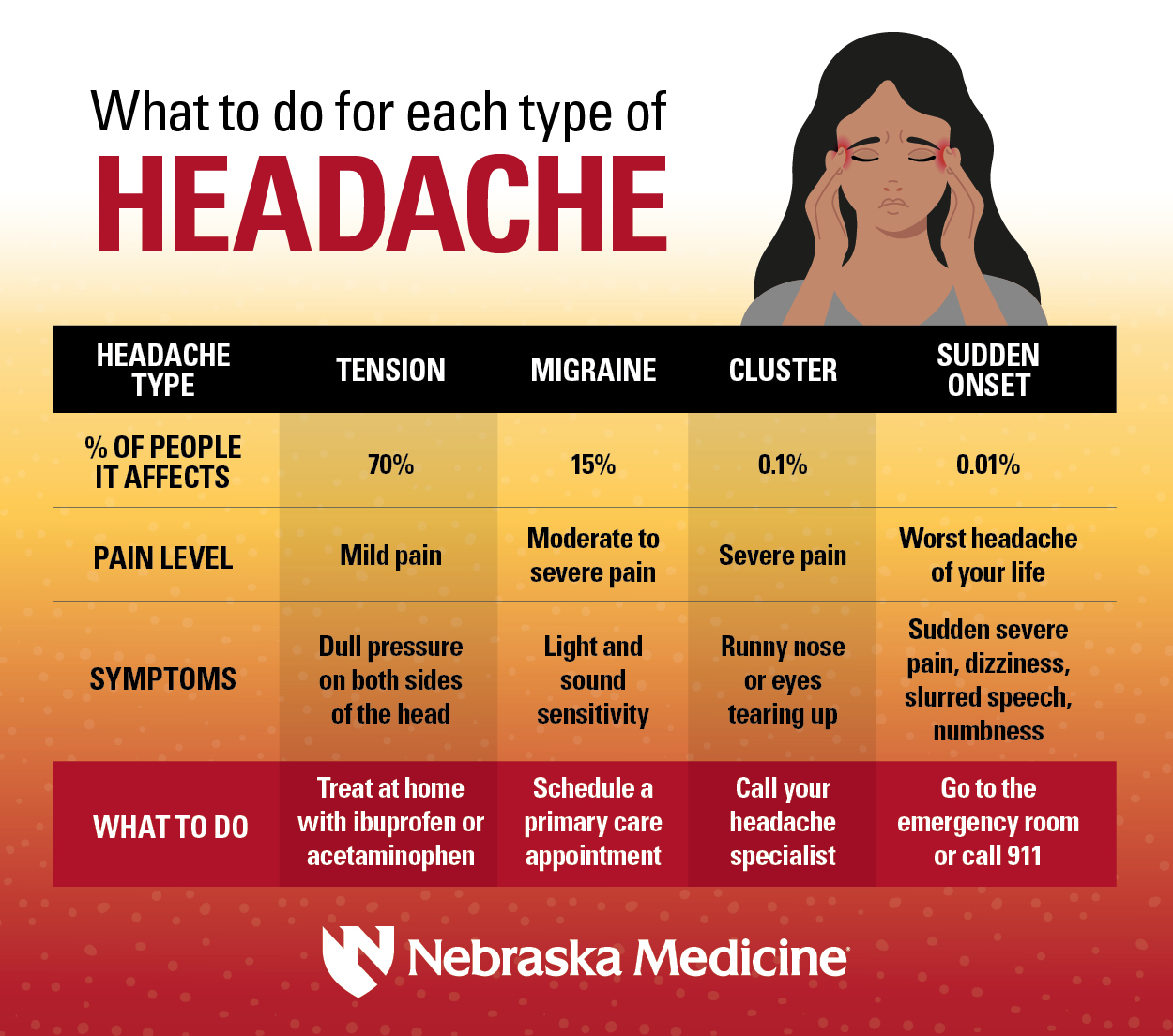
Often headache from sports. Doctors don’t work in the gym, they watch – young, healthy, come on! And a person cannot “give”, he has such physiological characteristics. And if he attends group classes, and the coach encourages him: “Keep up, a little more, we endure!” – the person is trying, but he is getting worse and worse … Listen, it’s obvious – something is going wrong. Even now, one hobby is fashionable – orthopedic pillows. They must be selected very carefully, taking into account the individual characteristics of the structure of the neck and head. But often, after all, they buy the first ones that come across or give friends for a birthday. A person begins to sleep on such a pillow, and soon it becomes a source of headache. People often do not see such simple connections. Sometimes it is enough to remove the pillow, and nothing needs to be treated. So before you go to the doctor, look around carefully to see if anything needs to be changed.
Can you die from a migraine?
No, migraine is not a fatal disease, no such cases have been recorded. But migraine disrupts the quality of life, so you need to be treated. To stop the attacks, specific painkillers are prescribed. This is not analgin, of course, combined analgesics are generally not good, addiction develops very quickly. They can effectively reduce the attack, we try to prescribe single-component drugs so that addiction develops slowly or does not develop at all, and there is a specific drug and dosage for each type of pain. And preventive measures are already made up of numerous factors and a combination of symptoms. It can be antidepressants, and antiepileptic drugs, and drugs that relax the muscles.
But migraine disrupts the quality of life, so you need to be treated. To stop the attacks, specific painkillers are prescribed. This is not analgin, of course, combined analgesics are generally not good, addiction develops very quickly. They can effectively reduce the attack, we try to prescribe single-component drugs so that addiction develops slowly or does not develop at all, and there is a specific drug and dosage for each type of pain. And preventive measures are already made up of numerous factors and a combination of symptoms. It can be antidepressants, and antiepileptic drugs, and drugs that relax the muscles.
When should a person with a headache see a doctor? When does he have a headache how many times a month?
This is also very subjective. We had patients who had a headache once a year. But they didn’t want her to get sick even this one time. And some have a headache all the time, and this does not bother them. There are no laws here. As long as it does not interfere with your life, you can not apply.


 1 Simple
1 Simple The patient becomes clumsy, it is difficult for him to navigate in space, there is a constant ringing in his ears.
The patient becomes clumsy, it is difficult for him to navigate in space, there is a constant ringing in his ears.